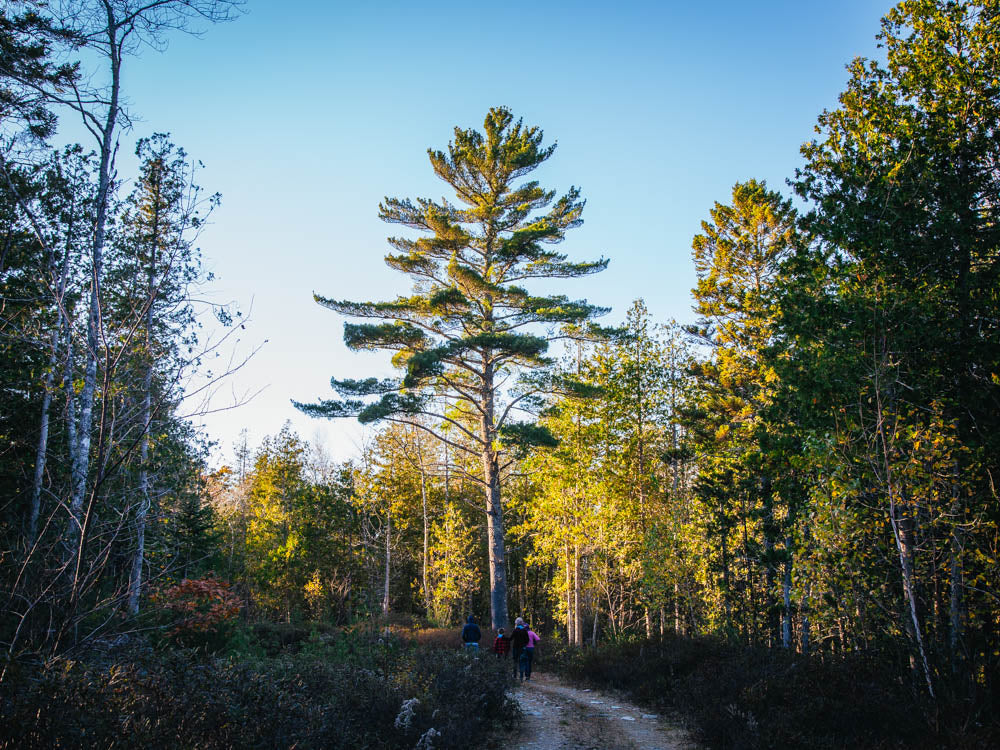
Some conifers are content to grow as their neighbors, dutifully straight to the sky, branches creating an arrow profile as they march upwards in symmetrical ranks. Often, this predictable pattern of growth ends eventually in the death of the tree – it simply can’t innovate to reach farther than its limited pattern allows and soak in the sunlight needed to thrive within a crowded forest. These trees just put their heads down, stick to the rulebook, and soon die from a lack of captured solar energy.

But the Eastern white pine (Pinus strobus) suffers no such compunctions. This tree takes risks, sometimes serious risks, in the effort to grab a patch of sunlight. It will send limbs out at often ridiculous angles to reinforce its hold on the canopy of a forest. But where the submissive firs and spruces calmly shed a heavy winter snow, the perilous behavior of the white pine can lead to disastrous limb failure. Pine is not a particularly sturdy wood (not like, say, oak) and must therefore utilize the ability to pack on mass for strength. But as a big tree ages, rot can easily set into the crooks and hollows available in these crooked trunks, weakening the structure. Big old forest pines often feature broken crowns, massive splits, and dead branches filled with woodpecker holes. You wouldn’t want to pitch a tent under one of these.
 And Eastern white pines get big. Very big. Although Maine has been logged over several times in the last few centuries, pines well over 100' tall are not at all uncommon. But in the past, heights of 200' were unexceptional, and some trees exceeded 250'. The mills of Maine powered out millions upon millions of board feet of lumber from these giants, furnishing the towns and cities of the East while flattening the virgin forests. But these forests are coming back, and who knows? Maybe in a few centuries, the white pine could again compete with West-coast redwoods and Douglas firs as the tallest on the continent.
And Eastern white pines get big. Very big. Although Maine has been logged over several times in the last few centuries, pines well over 100' tall are not at all uncommon. But in the past, heights of 200' were unexceptional, and some trees exceeded 250'. The mills of Maine powered out millions upon millions of board feet of lumber from these giants, furnishing the towns and cities of the East while flattening the virgin forests. But these forests are coming back, and who knows? Maybe in a few centuries, the white pine could again compete with West-coast redwoods and Douglas firs as the tallest on the continent.

 Pine lumber is lightweight, inexpensive, enjoyable to plane, and smells wonderful. Much vernacular furniture around the world is made from pine, and even though the wood is soft and can be prone to denting, these pieces have endured. It’s certainly my favorite, and a joy to work.
Pine lumber is lightweight, inexpensive, enjoyable to plane, and smells wonderful. Much vernacular furniture around the world is made from pine, and even though the wood is soft and can be prone to denting, these pieces have endured. It’s certainly my favorite, and a joy to work.
-Mike

